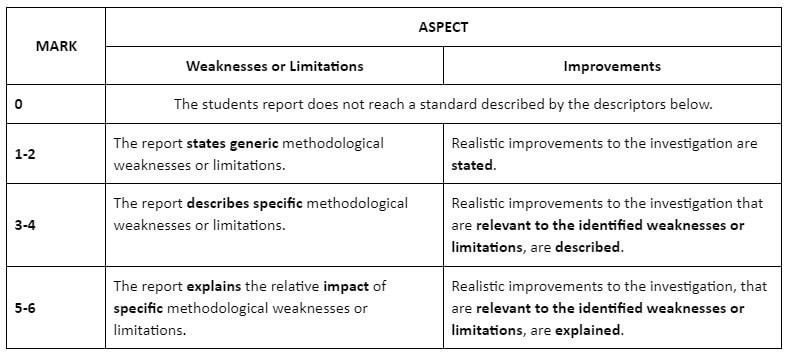Internal Assessment Evaluation
This criterion assesses the extent to which the student’s report provides evidence of evaluation of the investigation methodology and has suggested improvements.
- Click for the summary of IB internal assessment requirements.
- Click for a printable score sheet
Command terms indicate the depth of treatment required to earn the different marks.
- State: Give a specific name, value or other brief answer without explanation or calculation.
- Describe: Give a detailed account.
- Explain: Give a detailed account including reasons or causes.
WEAKNESSES OR LIMITATIONS
"What makes me lack confidence in my conclusion?"
Check list:
"What makes me lack confidence in my conclusion?"
Check list:
- Weakness/ limitations are specific to the methodology of the investigation
- Explain how the investigative design may have introduced limitations/weaknesses
- Explain the impact of weakness/limitations of procedural steps, if relevant
- Explain the impact of weakness/limitation in the control of variables, if relevant
- Explain the impact of weakness/limitation in the sample size or number of repeated measures/trials, if relevant
- Explain the impact of weakness/limitation in the number of level of manipulation, if relevant
- Explain the impact of the appropriateness of the apparatus in obtaining relevant data, if relevant
- Explain the impact of variation of the data on strength of the conclusion, if relevant
- Explain the impact of systematic errors, if relevant
- Explain the impact of random errors, if relevant
- Explain the impact of outlier data or irregularities in the data, if relevant
IMPROVEMENTS
"What would I changed to increase confidence in my conclusion?"
Check list:
"What would I changed to increase confidence in my conclusion?"
Check list:
- Improvements are realistic
- Improvements are specific
- Improvements are relevant to the identified weaknesses/limitations
